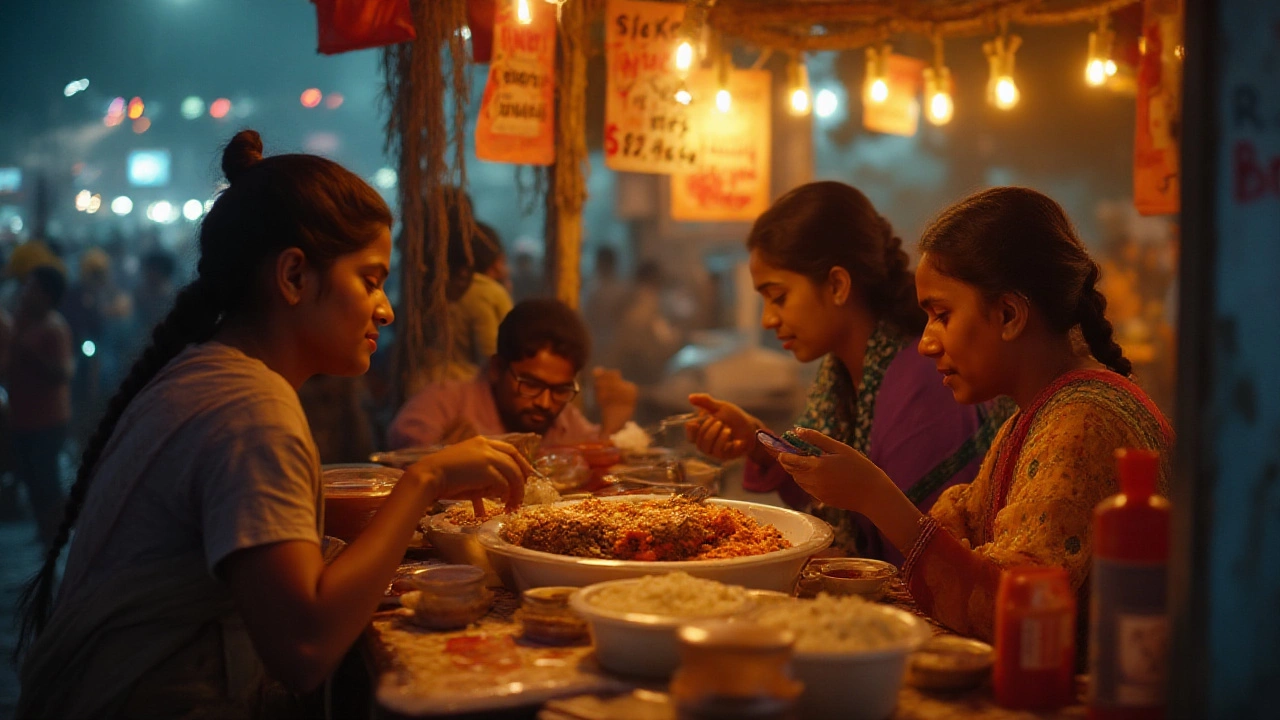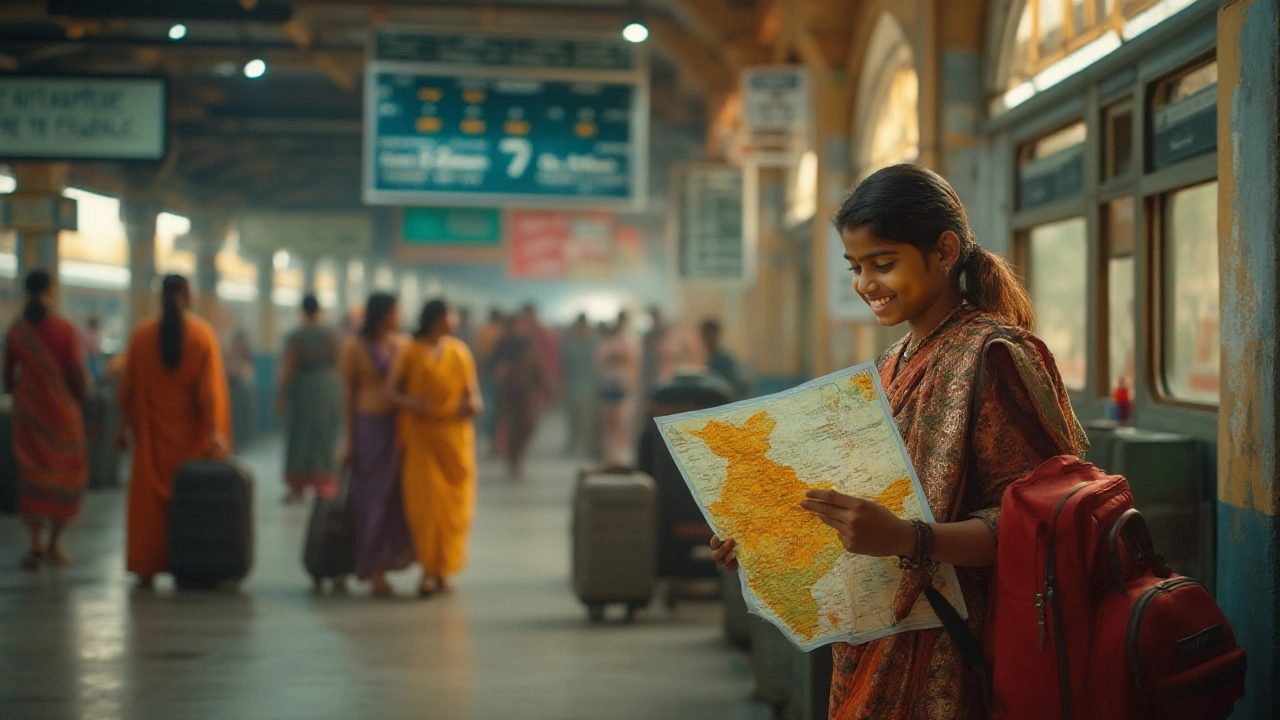If you think traveling through India means roughing it on dreadful overnight trains, think again. You can backpack on a shoestring or spoil yourself with luxury, all in the same country. India’s range of travel styles is wild—deluxe palaces, cozy hostels, sleeper buses barreling down the highway, and $1 thali lunches bursting with flavor. But here’s the real question: what’s the actual budget for a trip to India in 2025?
The Real Costs: Daily Expenses and Hidden Surprises
Picture this: you snag a street chai for 20 rupees (25 cents), enjoy a guesthouse for less than a New York coffee, and zip through a city by tuktuk for under a dollar. Yet, peel back the curtain, and you’ll see some costs—like monument entry fees or AC train tickets—can bite. On average, backpackers work with $25–40 a day (roughly ₹2,000–₹3,400), while mid-range travelers with some comfort in mind might budget $50–90 daily (₹4,000–₹7,500). Splurgers at luxury hotels can blow past $200 per night with ease.
India’s a land of contrasts, which means your expenses can swing a lot depending on how you travel. Want air conditioning or private car hires? Those add up. But stick to local trains, guesthouses, and street food, and you can spend a month here for less than a single week in Europe. Here’s a quick comparison (as of August 2025) for daily, mid-range, and luxury budgets, based on recent traveler reports and hotel booking data:
| Travel Style | Accommodation | Food | Transport | Sightseeing | Total per day (USD) |
|---|---|---|---|---|---|
| Budget Backpacker | $8 (Hostel/Guesthouse) | $4 | $3 (trains/buses) | $5 | $20 |
| Mid-Range | $30 (Hotels/AC rooms) | $10 | $8 | $10 | $58 |
| Luxury | $120 (5* Hotel) | $35 | $30 (private car) | $20+ | $205+ |
Common hidden costs? ATM fees and card surcharges, monument entry tickets (expect $8–$12 at hotspots like the Taj Mahal), bottled water, and prepaid SIM cards. It's smart to always budget a little more than you think you’ll need.
Getting Around: India’s Wild Transport Scene
Transport in India is half the adventure. Trains are an icon here, from dirt-cheap sleeper classes to air-conditioned luxury coaches the Maharajas would envy. Short hops between cities can cost as little as $2–$5 in second class, while a comfortable AC chair car runs $10–$14, depending on the route. For overnight cross-country trips, 2AC beds (with linen) fetch $20–$35. And there’s nothing quite like napping as the train clacks through Rajasthan.
Buses leave almost every hour from even the smallest towns, and tickets for three- to five-hour routes are usually under $5. Don’t expect punctuality, but you will get prime windows into rural life. For urban runs, expect to catch rickshaws for a buck or two—just haggle a little, as prices tend to float higher for foreigners. In big cities like Delhi and Mumbai, app-based cabs like Ola and Uber are everywhere; you’ll pay $2–$7 for most rides within city limits depending on the time of day.
If you want more privacy, private car hires with drivers start around $40–$60 a day for a basic sedan, fuel included. In hilly regions like Himachal Pradesh or Kerala, these can be lifesavers, but split the cost with fellow travelers to keep it affordable. Domestic flights are surprisingly cheap when booked weeks ahead, often less than $60 for popular routes such as Delhi–Goa or Mumbai–Jaipur. But beware, same-day tickets go way up in price.
- Pro tip: Book long-distance train tickets as early as possible using IRCTC or Cleartrip—third-party sites add a bit to the cost, but you’ll have more luck getting a confirmed seat.
- Night trains and sleeper buses cut a night’s accommodation cost, but bring earplugs and a scarf—the AC gets chilly fast!
- Always confirm the fare before getting in a rickshaw and ask for the meter in big cities.
Transportation will almost never be your biggest expense, but it will shape your itinerary more than anything else. Many travelers underestimate distances—India is huge. Overnight journeys are the norm; give yourself extra days for longer hops so you don’t burn out.

Food and Accommodation: Eating and Sleeping Well Without Breaking the Bank
If you’re a foodie, India’s going to spoil you silly. Street food—think samosas, vada pavs, sizzling dosas—can run as cheap as ₹30 to ₹60, that’s about $0.40 to $0.70 each. Eat where locals eat, and you’ll get more food for your money and fewer tummy troubles. Check for busy, freshly cooked stalls, and bring hand sanitizer along. Sit-down restaurants, even with AC, won’t wreck your wallet. In most cities you can get a proper meal with rice, curry, bread, and drink for $2–$4. If you go fancy—upstairs rooftop cafés, international cuisine, or bars in big cities—you’ll pay $8–$15 for mains, still much gentler than you’d expect.
Water safety is a big thing; bottled water costs $0.25 to $0.50 for a liter. But try finding hotels or cafés with filtered water if you want to save money (and not feel wasteful with single-use plastics). For special treats or western splurges—a pizza here, a café latte there—budget $4 to $6.
Accommodation in India is a playground of contrasts. Dorm beds in hostels or ashrams start at $5–$8 a night and are booming in backpacker hubs like Rishikesh, Varanasi, and Goa. Clean, basic private rooms with a fan can be found for under $15 even in touristy cities. For mid-range comfort—Wi-Fi, AC, private bath, and perhaps a rooftop view—look at $25–$35 per night. Boutique heritage hotels, restored havelis, or palace resorts can run $80 and up—sometimes way up. Advance booking on big hotel sites saves stress in busy season (October to March), but showing up and haggling can get you the best deal off-season.
- Tip for solo women: Try women-only dorms or family-run guesthouses for a bit more comfort and peace of mind.
- Bring your own lightweight lock for hostel lockers and always check the bathroom before booking.
- If you want Wi-Fi (it’s not a given), always ask before booking in person. Many hostels now offer coworking spaces for digital nomads for a small extra fee.
If you mix and match street eats with the occasional nice dinner, plus use hostels, family-run guesthouses, and apps like Oyo, finding the sweet spot for comfort and savings is totally doable.
How to Stretch Your Budget: Smart Planning and Insider Tricks
Planning a trip to India is about more than pinching every rupee. The most seasoned travelers balance flexibility with a few splurges—you’ll remember that sunrise Taj Mahal visit (which costs $12 to enter) long after you’ve forgotten the cheap hostel in Agra. Set aside more cash for those bucket-list moments, but save elsewhere.
Always trade money at ATMs attached to banks for the best exchange rates, but watch for international withdrawal fees, which can be $3–$6 each time. Many cafes and hotels in big cities now take cards, but keep cash for transport, tips, and shopping. Apps like Splitwise, Paytm, and Google Pay simplify group spending and are commonly accepted for rides, food, and even market shopping.
Inside tip: Having extra passport photos and copies of your ID makes setting up a SIM card a breeze, which costs around $3 to $10 for a month’s data—it’s worth it. Want to save on sightseeing? Check for composite entry tickets in places like Jaipur, where one pass gets you into multiple palaces for less. Student IDs (even expired) sometimes get foreigner discounts, so flash them with confidence.
- Visit in shoulder seasons (April to early June, September to early October) for cheaper accommodation and fewer crowds. Airfare also dips outside main festivals and holidays.
- Book night trains or buses so you combine travel and accommodation, stretching daylight hours at your destination.
- Buy authentic souvenirs at government-run emporiums, as fixed prices mean less haggling and no scams.
- Download offline maps and translation apps; very useful when exploring small towns or rural areas where few speak English.
With the right mix of planning, flexibility, and a willingness to try the local way, you can customize your trip for your budget, pace, and interests. The most important thing? India rewards open minds and adventurous spirits at every price point.
